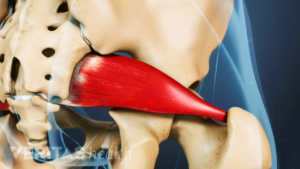PIRIFORMIS SYNDROME
If you suffer from pain or muscle weakness, please Schedule an appointment with one of our orthopedic specialists as soon as possible.
What Is Piriformis Syndrome?
 Spine Specialists define this condidtion as a neuromuscular disorder caused by the piriformis muscle compressing the sciatic nerve. Moreover, the flat band of piriformis muscle located in the buttocks sits at the top of the hip joint, and the thick sciatic nerve passes through the piriformis muscle, runs down through the leg, and branches off into smaller and smaller nerve endings in the feet. Additionally piriformis syndrome causes the piriformis to press on the sciatic nerve, patients usually report feeling pain, tingling, or numbness in the buttocks. Furthermore, patients may also experience pain when climbing stairs, sitting down for an extended period of time, or when pressing directly on the piriformis muscle. In spite of all of this, Piriformis Syndrome does not commonly present as the cause of sciatica.
Spine Specialists define this condidtion as a neuromuscular disorder caused by the piriformis muscle compressing the sciatic nerve. Moreover, the flat band of piriformis muscle located in the buttocks sits at the top of the hip joint, and the thick sciatic nerve passes through the piriformis muscle, runs down through the leg, and branches off into smaller and smaller nerve endings in the feet. Additionally piriformis syndrome causes the piriformis to press on the sciatic nerve, patients usually report feeling pain, tingling, or numbness in the buttocks. Furthermore, patients may also experience pain when climbing stairs, sitting down for an extended period of time, or when pressing directly on the piriformis muscle. In spite of all of this, Piriformis Syndrome does not commonly present as the cause of sciatica.
Indication of Piriformis Syndrome
When the piriformis muscle becomes tight, inflamed, or spasms, it can put pressure on the sciatic nerve, leading to symptoms such as:
- Pain: The hallmark symptom may involve pain in the buttock region. The pain may occur as a deep, sharp, or dull and may radiate down the back of the thigh or leg.
- Tingling or Numbness: Compression of the sciatic nerve can cause tingling or numbness in the buttocks, back of the thigh, or leg. This sensation may extend down to the foot.
- Muscle Weakness: In some cases, piriformis syndrome can lead to weakness in the affected leg or difficulty with certain movements, such as walking, climbing stairs, or rising from a seated position.
- Aggravation by Certain Activities: Symptoms of piriformis syndrome may worsen with activities that involve prolonged sitting, running, walking uphill, or engaging in activities that require repetitive movements of the hip.
Diagnosing piriformis syndrome can be challenging since its symptoms overlap with those of other conditions like herniated discs or other causes of sciatica. Moreover, imaging tests such as MRI or nerve conduction studies usually don’t provide conclusive evidence of piriformis syndrome. Diagnosis often relies on a thorough physical examination, medical history, and the elimination of other potential causes of the symptoms.
Treatment for Piriformis Syndrome
Additionally, rest and activity modification often alleviate symptoms of piriformis syndrome, with healthcare providers advising individuals to avoid or modify activities worsening their discomfort. Moreover, healthcare providers prescribe specific stretching and strengthening exercises targeting the piriformis muscle to alleviate tightness and enhance hip flexibility and stability. Furthermore, they may apply heat or cold therapy to the affected area to diminish pain and inflammation. Medications like nonsteroidal anti-inflammatory drugs (NSAIDs) or muscle relaxants may be prescribed for pain and inflammation management. Physical therapists commonly employ strategies to address muscle imbalances, enhance posture, and administer targeted treatments for symptom relief. In some cases, healthcare providers administer corticosteroid injections or local anesthetics to diminish pain and inflammation in the piriformis muscle.

